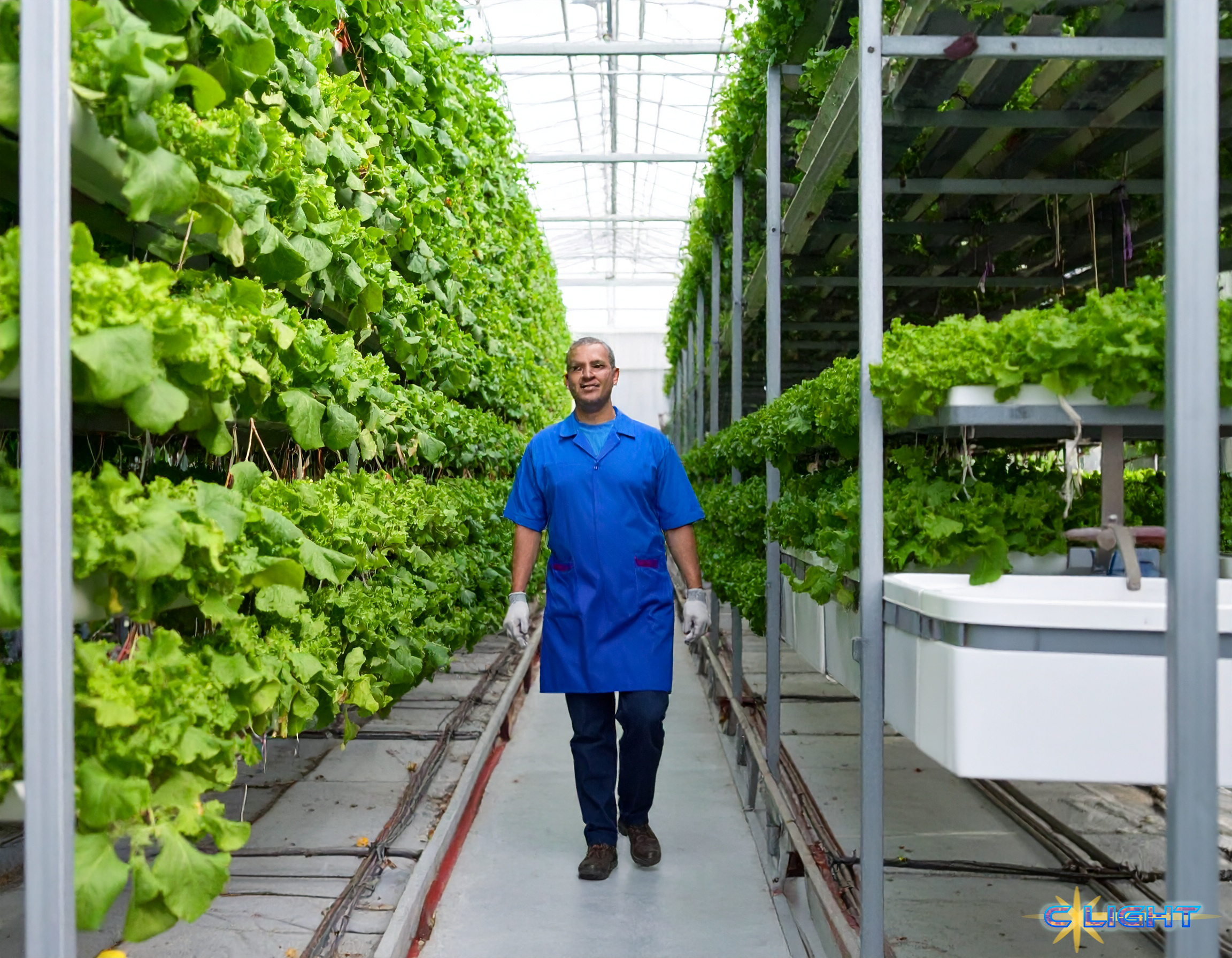The sting of rising grocery bills and the unease sparked by recent tariff implementations (like the broad 10% baseline tariff impacting imports) have brought a stark reality into focus for many Americans: our nation’s food supply, for all its abundance, is deeply intertwined with global logistics and vulnerable to international pressures. For decades, we’ve seen a consolidation of agriculture into large corporate hands and an increasing reliance on distant sources for much of our produce. But what if part of the solution to volatile food prices and supply chain anxieties was looking upwards, literally? Vertical farming, an innovative approach to growing food in stacked layers with remarkable efficiency, is stepping out of the experimental shadows, offering a potential path to reclaim food independence and even revitalize smaller-scale, local farming.
What Took So Long? The Evolution to “Vertical Farming 2.0”
The concept of growing crops in controlled, multi-layered environments isn’t brand new; early ideas date back over a century, with modern hydroponic and aeroponic techniques developing mid-20th century. The promise was always there: imagine producing ten times the food using up to 98% less water than conventional fields, year-round, irrespective of droughts or freezes. So, why hasn’t this seemingly miraculous approach dominated our food landscape until now?
Historically, widespread adoption was hindered by significant hurdles. The primary barriers included sky-high upfront capital costs for specialized infrastructure, lighting, and climate-control systems. Early iterations were also energy guzzlers, heavily reliant on less-efficient artificial lighting, which made the economics challenging for many crops beyond high-value leafy greens. Furthermore, the specialized knowledge required for these controlled environment agriculture (CEA) systems wasn’t widespread. This combination led to some well-publicized failures among large, venture-capital-fueled enterprises, creating skepticism about long-term viability.
But now, experts suggest we are entering “Vertical Farming 2.0.” This new phase is driven by key advancements: highly efficient, customizable, and more affordable LED lighting; sophisticated automation and AI for optimizing growing conditions; and refined water-recycling hydroponic and aeroponic systems. Equally important is a shift in the market: growing consumer demand for local, fresh, pesticide-free produce, heightened awareness of climate change’s impact on traditional farming, and a desire for more resilient food supply chains are creating a stronger pull. We’re also seeing a diversification of business models—some, like True Garden in Arizona with its $600 naturally-lit towers, or Houston’s Eden Grow Systems’ small, modular units for community centers—are demonstrating that vertical farming isn’t just for massive industrial setups but can empower smaller, independent producers.

Lessons from Abroad: Asia’s Urban Agricultural Revolution
For inspiration on how to integrate food production into the very fabric of our communities, we can look to the bustling, space-constrained cities of Asia. There, rooftop gardens, balcony plots, and even building-integrated farms are not just novelties but increasingly vital components of urban life and food security.
- In Singapore, a nation with profound land limitations, the government actively champions high-tech urban farms. Sky Greens utilizes impressive vertical rotating towers, and the city-state aims for its “30 by 30” goal – producing 30% of its nutritional needs locally by 2030.
- Tokyo boasts the Pasona Urban Farm, an office building where employees cultivate a wide variety of produce used directly in their cafeterias, blending work life with agriculture.
- Bangkok’s Thammasat University features Asia’s largest urban rooftop farm, ingeniously designed like rice terraces to collect rainwater and grow organic crops.
- Across Hong Kong, China, India, and the Philippines, numerous other initiatives, from technologically advanced skyscraper farms to community-driven grassroots gardens, showcase a commitment to hyper-local food production.
These examples demonstrate that with ingenuity and commitment, even the most densely populated urban areas can become significant contributors to their own food supply, drastically reducing food miles and enhancing freshness.
An American Harvest: Vertical Farming for Independence and Affordability
The efficiency of vertical farming offers a powerful toolkit for the U.S. to address its own food system vulnerabilities. The dramatic water savings are critical for drought-stricken agricultural states. The ability to grow year-round provides a buffer against climate volatility. And the potential to establish farms in urban food deserts can directly combat food insecurity and high produce prices driven by long supply chains.
Crucially, “Vertical Farming 2.0” isn’t solely about large corporations. The emergence of more affordable, scalable, and adaptable systems opens the door for a new wave of independent farmers and community-led initiatives. Imagine vacant office building basements (like Eden Grow Systems is pioneering in Houston), community centers, or even schools hosting their own compact, productive vertical farms. This decentralized approach can bolster local economies, create new “urban farmer” jobs, and give communities more control over their food supply – a direct counter to the dependencies highlighted by recent tariff concerns.
Beyond dedicated farm structures, the Asian model of integrating micro-farms into everyday urban spaces—balconies brimming with herbs and vegetables, rooftops transformed into productive gardens—offers another layer of food resilience and community engagement. While not a replacement for all traditional agriculture, these hyper-local efforts can supplement diets, reduce grocery bills, improve local air quality, and reconnect people with their food.

Cultivating a More Resilient Future, From the Ground Up
The “tariff scare” and rising food prices serve as a stark reminder of the vulnerabilities in our current food systems. Vertical farming, in its diverse and evolving forms, presents a compelling opportunity to cultivate greater U.S. food independence, stabilize prices through increased local supply, and empower a new generation of independent, innovative farmers. By learning from global successes, embracing technological advancements, and fostering supportive policies, we can “step up” and integrate these upward-growing solutions into the fabric of our communities. It’s time to look beyond traditional fields and see the immense potential in our urban landscapes to grow a more secure and sustainable American harvest.
Discover more from Clight Morning Analysis
Subscribe to get the latest posts sent to your email.










